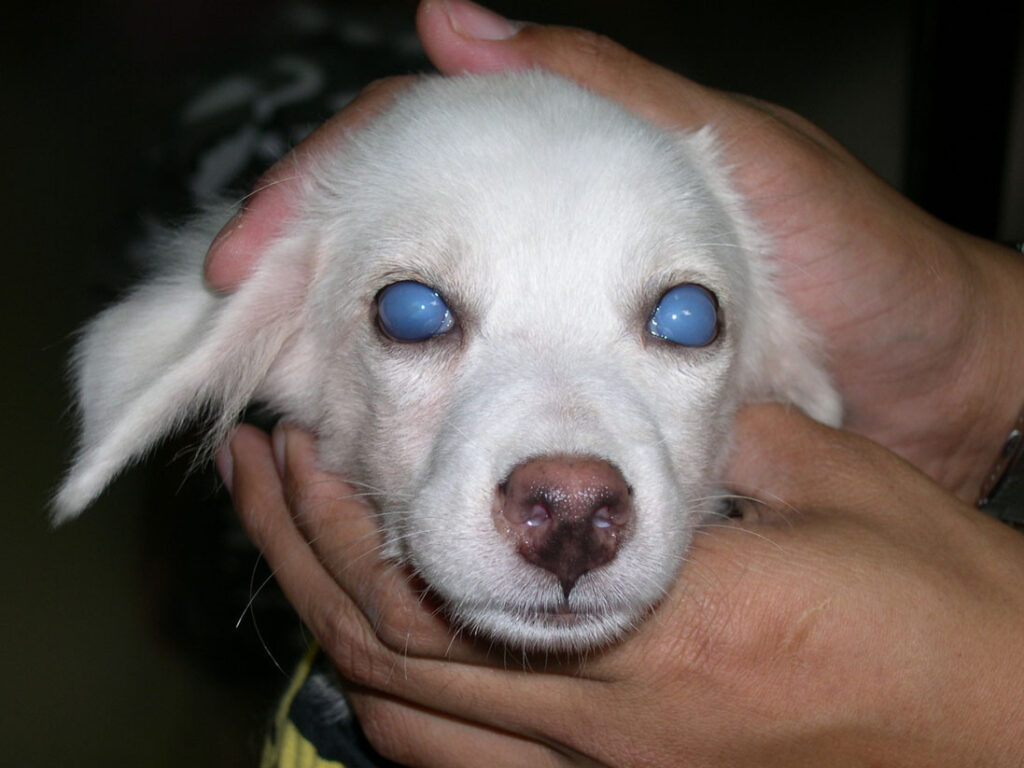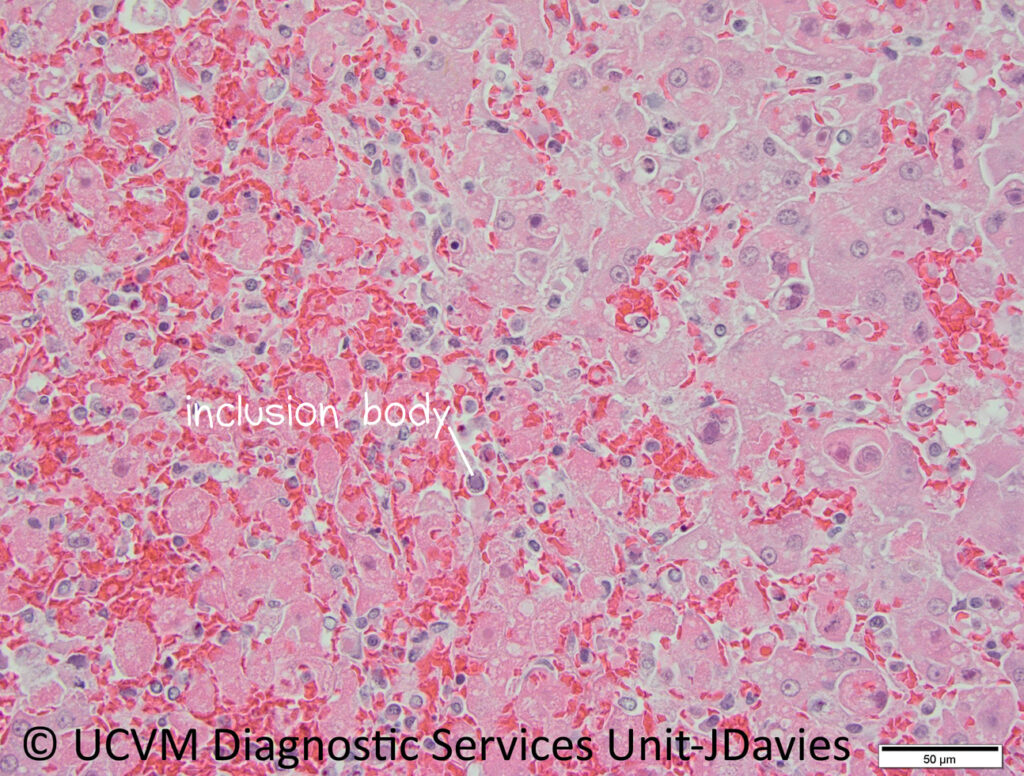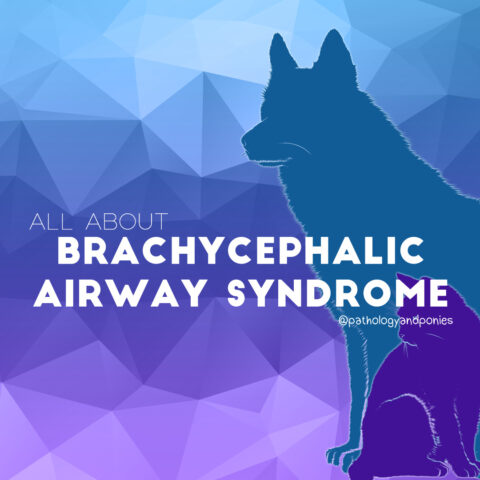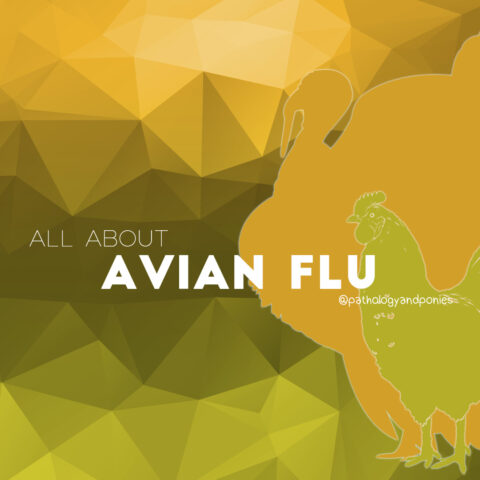




Today’s path rounds are on 𝐜𝐚𝐧𝐢𝐧𝐞 𝐢𝐧𝐟𝐞𝐜𝐭𝐢𝐨𝐮𝐬 𝐡𝐞𝐩𝐚𝐭𝐢𝐭𝐢𝐬!
𝐖𝐡𝐚𝐭 𝐢𝐬 𝐢𝐭?
𝐂𝐚𝐧𝐢𝐧𝐞 𝐢𝐧𝐟𝐞𝐜𝐭𝐢𝐨𝐮𝐬 𝐡𝐞𝐩𝐚𝐭𝐢𝐭𝐢𝐬 is a viral disease caused by 𝐜𝐚𝐧𝐢𝐧𝐞 𝐚𝐝𝐞𝐧𝐨𝐯𝐢𝐫𝐮𝐬, one of the major pathogens we vaccinate dogs for! In fact, our vaccination policies have been so successful that this disease is now considered rare in North America.
𝐖𝐡𝐨 𝐠𝐞𝐭𝐬 𝐢𝐭?
This disease primarily affects young puppies, although any dog can get it. In general, dogs over 2 years of age are less likely to have severe disease.
𝐖𝐡𝐚𝐭 𝐜𝐚𝐮𝐬𝐞𝐬 𝐢𝐭?
As mentioned, this disease is caused by an adenovirus. Dogs acquire the virus through 𝐢𝐧𝐡𝐚𝐥𝐚𝐭𝐢𝐨𝐧 or 𝐢𝐧𝐠𝐞𝐬𝐭𝐢𝐨𝐧, allowing the virus to come into contact with the tonsils and 𝐏𝐞𝐲𝐞𝐫’𝐬 𝐩𝐚𝐭𝐜𝐡𝐞𝐬, which are lymph node-like structures in the intestine. In these locations, the virus replicates and enters the bloodstream, where it seeks out 𝐞𝐧𝐝𝐨𝐭𝐡𝐞𝐥𝐢𝐮𝐦, the cells lining blood vessels. Because blood vessels can be found pretty much everywhere, we can see the virus in numerous organs, including the liver, kidneys, spleen and lungs.
𝐖𝐡𝐲 𝐢𝐬 𝐭𝐡𝐢𝐬 𝐚 𝐩𝐫𝐨𝐛𝐥𝐞𝐦?
Once the virus infects the endothelium, it damages the cells. This allows blood, fluid and proteins to leak out of the vessels into the surrounding areas, which we see as hemorrhage and edema. As you might have guessed from the name infectious canine hepatitis, this virus also has a particular 𝐭𝐫𝐨𝐩𝐢𝐬𝐦 (affinity) for the cells of the liver. When it infects these cells, it causes 𝐧𝐞𝐜𝐫𝐨𝐬𝐢𝐬 (cell death), which can affect liver function. Clinically, these animals present with 𝐩𝐞𝐭𝐞𝐜𝐡𝐢𝐚𝐞 (small hemorrhages) on their mucosa, edema under the skin, abdominal pain, fever and vomiting.
Another interesting problem that develops from canine adenovirus infection is formation of 𝐢𝐦𝐦𝐮𝐧𝐞 𝐜𝐨𝐦𝐩𝐥𝐞𝐱𝐞𝐬. These complexes occur when an antibody binds to the virus, and forms a large structure that the body cannot easily remove. These complexes tend to lodge in vessels and cause a local inflammatory reaction. One common site for these complexes to lodge is the 𝐜𝐨𝐫𝐧𝐞𝐚 (outer aspect of the eye), causing edema. Clinically, this looks like the eyes turning blue or cloudy, as the extra fluid builds up within the eye! Wild.
𝐇𝐨𝐰 𝐢𝐬 𝐢𝐭 𝐝𝐢𝐚𝐠𝐧𝐨𝐬𝐞𝐝?
Diagnosis can be made through 𝐏𝐂𝐑 𝐭𝐞𝐬𝐭𝐢𝐧𝐠, where the DNA of the virus is directly identified. At necropsy, adenovirus causes 𝐢𝐧𝐭𝐫𝐚𝐧𝐮𝐜𝐥𝐞𝐚𝐫 𝐢𝐧𝐜𝐥𝐮𝐬𝐢𝐨𝐧 𝐛𝐨𝐝𝐢𝐞𝐬 (pink dots within the nucleus) that can be used to support diagnosis of the disease.
𝐇𝐨𝐰 𝐢𝐬 𝐢𝐭 𝐭𝐫𝐞𝐚𝐭𝐞𝐝? 𝐇𝐨𝐰 𝐢𝐬 𝐢𝐭 𝐩𝐫𝐞𝐯𝐞𝐧𝐭𝐞𝐝?
Unfortunately, this disease has a very poor prognosis in young puppies, with a mortality rate of 10-30%. Treatment typically involves supportive care to help the body fight the infection, as there is no specific treatment available. Thankfully, we now have very effective vaccines against this disease!
𝐏𝐡𝐨𝐭𝐨𝐬
1-3) A liver, kidney and lungs with multiple small hemorrhages from canine adenovirus.
4) A puppy with “blue eye”.
5) Intranuclear inclusions in the liver!
𝐒𝐨𝐮𝐫𝐜𝐞𝐬
Maxie, G. Jubb, Kennedy and Palmer’s Pathology of Domestic Animals, Volume 2. Sixth Edition.
Creevy KE. Overview of infectious canine hepatitis. Merck Veterinary Manual 2016.
Photos 1-4 © Noah’s Arkive contributors Read, Williams, Kesdangsakonwut, Jakowski licensed under CC BY-SA 4.0.
Photo 5 © University of Calgary Diagnostic Services Unit.




